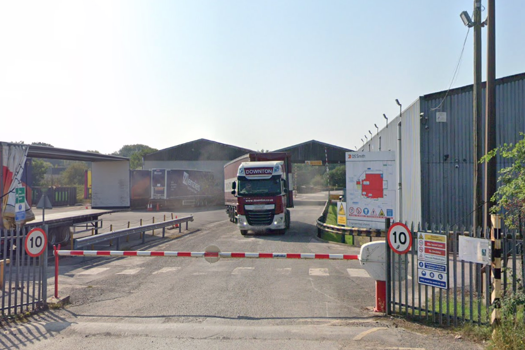The collection, ‘A Kingdom of Cardboard: The Golden Age of BBC Graphics’, is scheduled to run until around January, although the closing date is to be confirmed.
Covering the period from 1936 to 1986, the collection was assembled by Bob Richardson, library, learning and interpretation officer at City of London-based St Bride Library, who rescued the ephemeral material from BBC dustbins over the last 45 years, or has had it loaned by private collectors.
From the earliest days of British television there was a requirement for simple on-screen graphics. In 1932, the Baird experimental TV studio in Portland Place installed a graphics camera ‘tombola’ with 12 cardboard captions, including the very first BBC television ident. Painted by commercial artists, only two examples are known to survive.
Caption material was largely ephemeral and routinely destroyed after use. All of the items were rescued from skips and rubbish bins, with private collectors preserving much of the material.
The collection includes various BBC logos and idents from over the years, as well as material from Grandstand, Sportsnight, Match of the Day, Blue Peter, and Mastermind, among others, as well as the magnetic symbols used for weather forecasts until early 1985.
Graphic props on display include the microphone badges used in the comedy series Hi-De-Hi!, which were printed on card using a Masseeley press, and the screen printed name panels made for gameshow Blankety Blank and fixed to the front of the lightboxes on the set.
At a private viewing event held last night (11 August), Richardson said: “Almost everything here was destined for the rubbish tip, and various individuals stepped in on a rescue mission, including John Tidy, who is responsible for some of the nicest pieces we have on display, including our only surviving classified football results board.”
Richardson, who started work at the Television Centre in 1977, in the house manager’s office, continued by outlining how he came across many of the various pieces of print and graphics that were set to be discarded by the BBC.
“Alas today, it’s largely digital, so the opportunities for skip surfing are no more.”
He added: “Most of the material in our exhibition was filmed by the BBC last autumn for a BBC centenary special edition of the Antiques Roadshow.”
The programme is expected to be aired in around October, although Richardson said when the transmission date is known, it will be shared on St Bride Library’s social media and website.
Foundation librarian Sophie Hawkey-Edwards told Printweek that the feedback so far to the exhibition has been “really amazing”.
“We’ve drawn in not just our usual community, but also people who we would not normally have coming here, such as those who are interested in graphic design, so that will hopefully keep them coming back again.”
She added the library will also host a lecture on the collection, delivered by Richardson, on 21 September.










